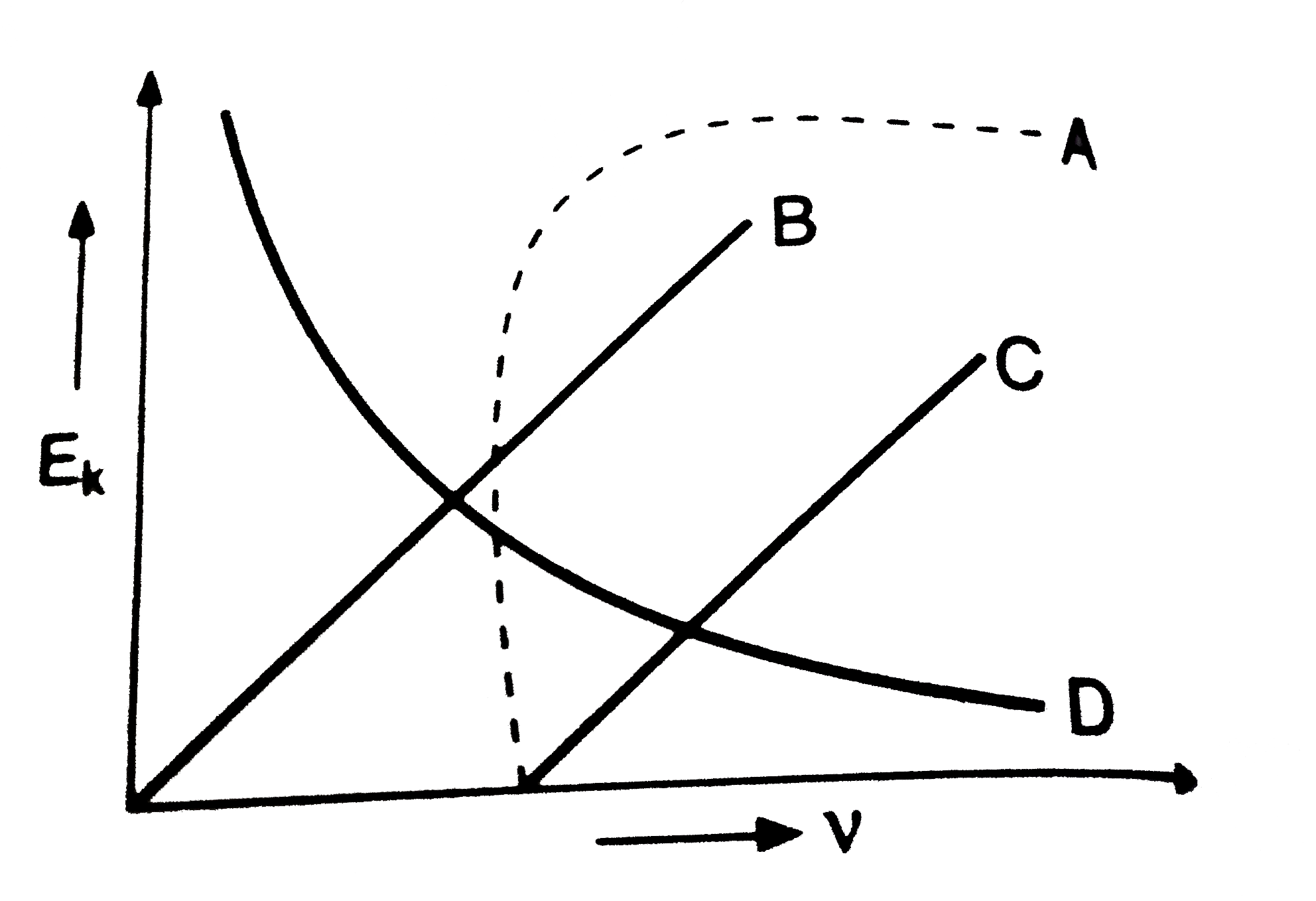A light of frequeney v is incident on a metal surface whose work function is W0. The kinetic energy of emitted electron is K. If the frequency of the incident light is doubled then the kinetic energy of emitted electron will be:
2K
more than 2K
between K and 2K
less than K
To solve the problem, we need to understand the relationship between the frequency of the incident light, the work function of the metal, and the kinetic energy of the emitted electrons. This relationship is given by the photoelectric equation:
K=hv−W0
where:
- K is the kinetic energy of the emitted electron,
- h is Planck's constant,
- v is the frequency of the incident light,
- W0 is the work function of the metal.
1. Initial Situation:
The initial frequency of the light is v. According to the photoelectric equation, the kinetic energy K of the emitted electron is given by:
K=hv−W0
2. Doubling the Frequency:
When the frequency of the incident light is doubled, the new frequency becomes 2v. We need to find the new kinetic energy K′ of the emitted electron using the same photoelectric equation:
K′=h(2v)−W0
3. Substituting the New Frequency:
Substitute 2v into the equation:
K′=2hv−W0
4. Relating the New Kinetic Energy to the Old:
We can express K′ in terms of the original kinetic energy K:
K′=(2hv−W0)=2(hv)−W0
From the initial equation, we know hv=K+W0. Substitute this into the equation for K′:
K′=2(K+W0)−W0
Simplifying this gives:
K′=2K+2W0−W0=2K+W0
5. Final Expression:
Thus, the new kinetic energy K′ when the frequency is doubled is:
K′=2K+W0
Conclusion:
The kinetic energy of the emitted electron when the frequency of the incident light is doubled will be K′=2K+W0.
- K is the kinetic energy of the emitted electron,
- h is Planck's constant,
- v is the frequency of the incident light,
- W0 is the work function of the metal.
The initial frequency of the light is v. According to the photoelectric equation, the kinetic energy K of the emitted electron is given by:
K=hv−W0
When the frequency of the incident light is doubled, the new frequency becomes 2v. We need to find the new kinetic energy K′ of the emitted electron using the same photoelectric equation:
K′=h(2v)−W0
Substitute 2v into the equation:
K′=2hv−W0
We can express K′ in terms of the original kinetic energy K:
K′=(2hv−W0)=2(hv)−W0
From the initial equation, we know hv=K+W0. Substitute this into the equation for K′:
K′=2(K+W0)−W0
Simplifying this gives:
K′=2K+2W0−W0=2K+W0
Thus, the new kinetic energy K′ when the frequency is doubled is:
K′=2K+W0
The kinetic energy of the emitted electron when the frequency of the incident light is doubled will be K′=2K+W0.
Topper's Solved these Questions
Similar Questions
Knowledge Check
A photon of frequency v is incident on a metal surface whose threshold frequency is v0. The kinetic energy of the emitted photoelectrons will be
AhvBhv0Ch(v+v0)Dh(v−v0)Light of wavelength 3000Å is incident on a metal surface whose work function is 1 eV. The maximum velocity of emitted photoelectron will be
A10ms−1B103ms−1C104ms−1D106ms−1Photons of energy 6eV are incident on a metal surface whose work function is 4eV. The minimum kinetic energy of the emitted photo - electrons will be
A0eVB1eVC2eVD10eV
Light of wavelength 500nm is incident on a metal with work function 2.28eV. The de Broglie wavelength of the emitted electron is
View SolutionLight of frequency 4v0 is incident on the metal of the threshold frequency v0. The maximum kinetic energy of the emitted photoelectrons is
View SolutionLight of frequency v is incident on a substance of threshold frequency v(v<v). The energy of the emitted photo-electron will be
View SolutionThe maximu kinetic energy (Ek) of the photoelectron varies with frequency (v) of the incident light as shown by the curve:

View SolutionLight of wavelength 4000 Å is incident on a metal surface. The maximum kinetic energy of emitted photoelectron is 2 eV. What is the work function of the metal surface ?
View Solution
